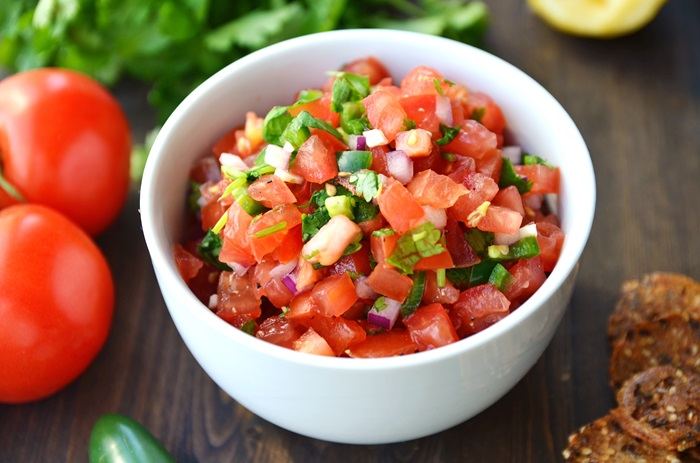Salsa is a vibrant and essential component of Mexican cuisine, adding color, flavor, and heat to countless dishes. From breakfast tacos to dinner enchiladas, salsa can be found on nearly every table in Mexico. The word “salsa” literally means “sauce” in Spanish, but it refers to a wide range of fresh and cooked sauces that vary by region and family tradition. In this article, we will explore the art of preparing and cooking Mexican salsa, delving into different types, ingredients, techniques, and cultural significance. Whether you’re a seasoned chef or a beginner cook, this guide will provide you with the knowledge and inspiration to create authentic and delicious salsas at home.
Types of Mexican Salsas
Fresh Salsas
Fresh salsas are made from raw ingredients and are often served as a condiment or dip. They are quick to prepare and retain the freshness and crunchiness of their components.
Pico de Gallo (Salsa Fresca)
Ingredients: Diced tomatoes, onions, chiles, cilantro, lime juice, salt.
Cultural Significance: Pico de Gallo is a symbol of simplicity and freshness in Mexican cuisine. It’s commonly used as a topping for tacos, grilled meats, and seafood.
Salsa Verde Cruda
Ingredients: Tomatillos, jalapeños, garlic, onion, cilantro, lime juice, salt.
Cultural Significance: Salsa verde cruda showcases the natural flavors of tomatillos, which are indigenous to Mexico. It’s a popular accompaniment to poultry, fish, and vegetarian dishes.
Cooked Salsas
Cooked salsas involve roasting or simmering ingredients to deepen flavors and soften textures. They can be served warm or cold and are often used as a sauce for main courses.
Salsa Roja
Ingredients: Ripe tomatoes, dried chiles, garlic, onion, cumin, oregano, salt.
Cultural Significance: Salsa roja is a staple in many Mexican households and restaurants. Its rich tomato base makes it perfect for drizzling over enchiladas, tamales, and eggs.
Salsa de Chile Pasilla
Ingredients: Pasilla chiles, garlic, onion, chicken broth, sugar, salt.
Cultural Significance: This dark red sauce is made from pasilla chiles, known for their deep, smoky flavor. It’s an excellent choice for enriching stews and braised meats.
Mole Sauce Variations
Ingredients: Various depending on the type of mole (e.g., Mole Poblano uses chocolate, nuts, spices).
Cultural Significance: Moles are complex sauces that represent the pinnacle of Mexican culinary artistry. They are often prepared for special occasions and celebrations.
Preparing Mexican Salsas
Selecting Ingredients
The quality of your salsa depends greatly on the freshness and ripeness of your ingredients. Choose firm, ripe tomatoes and tomatillos without blemishes. Opt for fresh chiles that have a bright color and smooth skin. Onions should be firm and dry, while cilantro should have vibrant green leaves without yellowing.
Cleaning and Prepping
Thoroughly wash all vegetables and herbs under running water to remove any dirt or debris. For chiles, remove stems and seeds if you prefer less heat. Peel garlic cloves and slice onions thinly. If using fresh herbs like cilantro, trim the stems and chop the leaves finely.
Roasting Ingredients
Roasting enhances the flavors of certain ingredients and adds depth to your salsa. Place whole tomatoes, tomatillos, and chiles directly on a gas flame or under a broiler until they are charred on all sides. Alternatively, roast them in a hot oven or on a grill pan. Once roasted, peel the skins off tomatoes and tomatillos, and soak chiles in hot water to soften before blending.
Cooking Techniques for Mexican Salsas
Blending and Processing
Use a blender or food processor to combine your prepped ingredients into a smooth or chunky consistency. Start by blending roasted or raw tomatoes, tomatillos, and chiles with garlic and onions. Gradually add seasonings like salt, pepper, cumin, and oregano to taste. For a smoother texture, strain the salsa through a fine mesh sieve. Adjust the consistency with water or broth if necessary.
Simmering and Thickening
For cooked salsas, simmering allows flavors to meld together and thicken the sauce. After blending, pour the mixture into a saucepan and bring it to a gentle boil. Reduce the heat and let it simmer for 15-20 minutes, stirring occasionally. Add a small amount of cornstarch mixed with water if you want a thicker consistency. Taste and adjust seasoning as needed.
Serving Suggestions
Serve fresh salsas immediately to enjoy their crispness and vibrant colors. Cooked salsas can be served warm or at room temperature. Offer a variety of salsas alongside tortilla chips, tacos, enchiladas, or grilled meats. Garnish with chopped cilantro, diced onions, or radishes for added freshness.
Cultural Significance of Mexican Salsas
Mexican salsas are more than just sauces; they are an integral part of the country’s culinary identity. Each salsa has its own history and regional variations, reflecting the diverse cultures and traditions within Mexico. Salsas are often passed down through generations, preserving family recipes and stories. They play a crucial role in social gatherings and celebrations, bringing people together around the table. Moreover, salsas embody the resourcefulness and creativity of Mexican cooks, who use simple ingredients to create complex and flavorful dishes.
Conclusion
In conclusion, preparing and cooking Mexican salsas is both an art and a science. By selecting the right ingredients, mastering various cooking techniques, and understanding the cultural significance behind each salsa, you can recreate authentic Mexican flavors in your kitchen. Whether you’re making a quick pico de gallo or a labor-intensive mole, the process of creating salsas connects us to the rich heritage of Mexican cuisine. So, roll up your sleeves, gather your ingredients, and embark on a flavorful journey through the world of Mexican salsas. ¡Buen provecho! Enjoy the fruits of your labor and share the joy of homemade salsas with friends and family.
Related topics:


